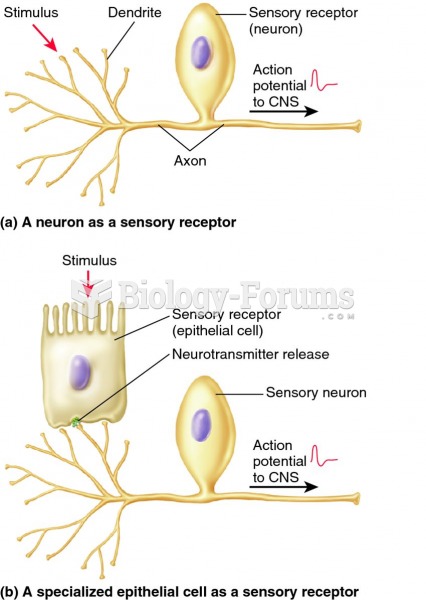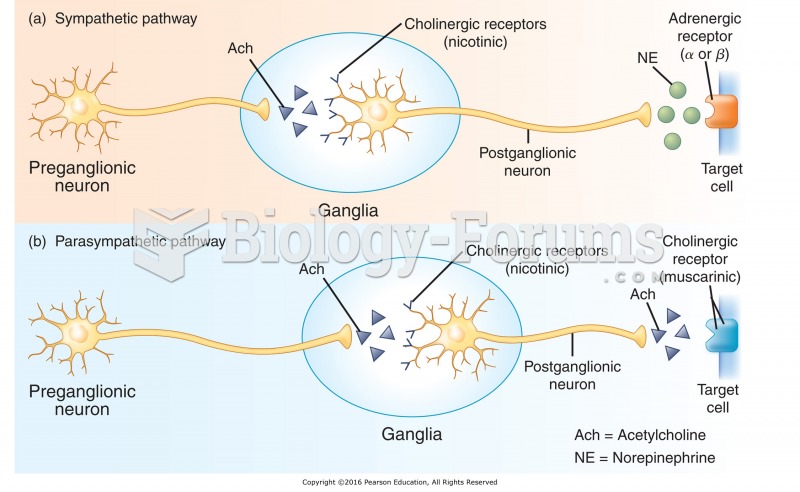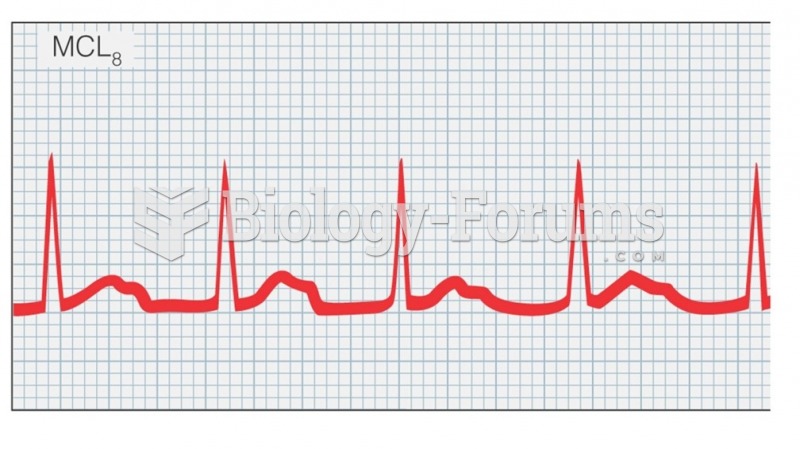Answer to Question 1
Correct Answer: 1,2,3
Rationale 1: Medications that block muscarinic receptors are used during ophthalmic procedures.
Rationale 2: Medications that block muscarinic receptors are used in the pharmacologic treatment of asthma.
Rationale 3: Medications that block muscarinic receptors are used in the pharmacologic treatment of bradycardia.
Rationale 4: Medications that block muscarinic receptors are not used in the treatment of endocrine disorders.
Rationale 5: Medications that block muscarinic receptors are not used in the treatment of metabolic disorders.
Global Rationale: Medications that block muscarinic receptors are used during ophthalmic procedures, to treat asthma, and to treat bradycardia. Medications that block muscarinic receptors are not used in the treatment of endocrine disorders or metabolic disorders.
Answer to Question 2
Correct Answer: 1,2,3,4,5
Rationale 1: This is the first step of synaptic transmission across the neuroeffector junction.
Rationale 2: This is the second step of synaptic transmission across the neuroeffector junction.
Rationale 3: This is the third step of synaptic transmission across the neuroeffector junction.
Rationale 4: This is the fourth step of synaptic transmission across the neuroeffector junction.
Rationale 5: This is the fifth step of synaptic transmission across the neuroeffector junction.
Global Rationale: The steps of synaptic transmission across the neuroeffector junction are 1) synthesis of the neurotransmitter; 2) storage of the neurotransmitter; 3) release of the neurotransmitter; 4) binding to the receptor; and 5) termination of neurotransmitter action.







